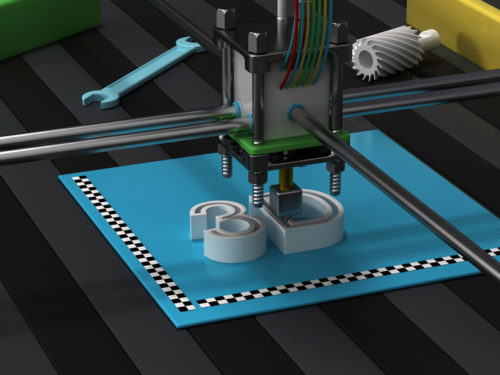Is inventory management clouding your judgment?
Is inventory management clouding your judgment?

Imagine a world where running lean meant the digitization of goods while using smart systems to manufacture end product next to your consumers. Creating such a customer-centric model of production could change the way we view parts manufacturing in its entirety.
3D printing has crept into conversations regarding modern day business and has become more cost effective. Technological advancements have increased both speed and quality control, and in turn have opened the doors to a game-changing IoT solution.
One where businesses today, both small and large, can leverage the connected world to shift inventory control to the cloud.
“New age approaches to reducing overhead in an effort to free cash flow has accounted for several groundbreaking shifts in the corporate business world,” says Rosemary Turner, President at UPS. “Strategies like Digitizing Inventory enables corporations to serve every channel of commerce and handle Just-In-Time models at the same time.”
“Simply put, customer centricity drives business growth, and if you aren’t doing it today, you will soon.” she adds.
Inventory control is a capital sinkhole, one where your invested money sits idle for use when it otherwise could be spent on growing your business. The requisition of space and pick pack operations require time and a team to run them, which again requires capital. So what does the world look like if you weren’t forced to keep a back stock of parts and products for returns and sales? It looks leaner, more refined, and allows for more spending on growth activities like digital marketing campaigns and more.
A great new opportunity
Sounds awesome right? That’s because it is, yet many businesses don’t even know this opportunity exists.
UPS, SAP, and Fast Radius have all partnered to identify slow moving inventory, which typically requires injection molding for minimum quantity runs in order to make the production cost effective. Fast Radius, a 3D printer company out of the U.S., can assist in running low quantity parts in proximity to your end user.
Think DiDi meets demand manufacturing… A systematic approach to connecting the closest printer, with spec-driven capabilities, to localized requests for goods. The obvious downside is quality control. However, 3D printing has evolved to now have the ability to turn product typically in 1-2 days inclusive of QC requirements. With material limitations becoming a non-issue due to advancements in the printers themselves, there really isn’t a reason to not explore this model shift.

Rosemary Turner, President, UPS
“Advances in 3D printing have enabled all sorts of solutions to issues facing slow moving inventory,” says Turner. “For example, printers today can actually print finished products with embedded circuitry and tech, so it doesn’t just have to be the case anymore.”
Large tech companies represent the early adopters of cloud-based inventory. Typically these companies are required to maintain service level agreements with their clients in order to handle repairs within a given timeframe. They leverage customer centric repair offerings and replacement parts as a method of selling more to high-end enterprise clientele.
“UPS today is worth over a petabyte of data. Imagine 400k file drawers stuck somewhere all accessible on demand,” Turner points out. “It is imperative that companies like UPS continue to embrace cloud-based solutions, as growth and market demand force you to do so. To not adopt can create obsolete.”
The second subset of companies to embrace this change is startups and small businesses. The ability to produce end product at customer locations saves both time and money, which helps offset the slightly higher production costs. The adoption of this model upstream also provides potential investors with a clear cut execution model that is built around scalability and capital alleviation.
“No matter who you are, you have access to the connected world, and as a business owner it is your responsibility to leverage tools which enable efficiency and growth,” says Turner. “Yet it is more than that, the marketplace today demands customer centricity, and it demands our undivided attention to detail on our engagements with our consumers every day. Digitization strategies are only the beginning.”
“The future of Just in Time manufacturing with zero-quantity thresholds and no setup fees is fast approaching, and we here at UPS are poised to enable our customers to capitalize on these opportunities,” she adds.
Come join us
Ultimately, the connected world drives customer centricity. Competition drives all of us to think differently. Here at UPS we are looking for innovators to continue to move industries into the future. We welcome you to take on the challenge of “Simplifying Logistics” by participating in our upcoming Hackathon.
To kick things off, we are partnering with ReadWrite for an official launch party on May 16th. Join us for this exclusive networking opportunity with peers and industry experts to make connections, learn, network, and work together to increase the speed, efficiency and performance of the supply chain to improve the customer experience. RSVP here.
This article as produced in partnership with UPS.
The post Is inventory management clouding your judgment? appeared first on ReadWrite.
(53)


